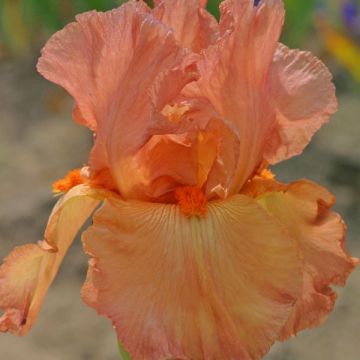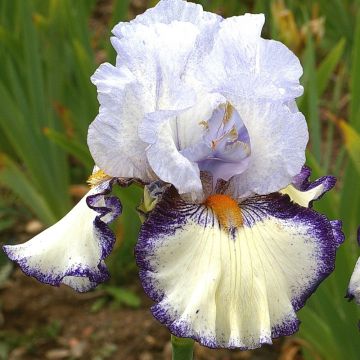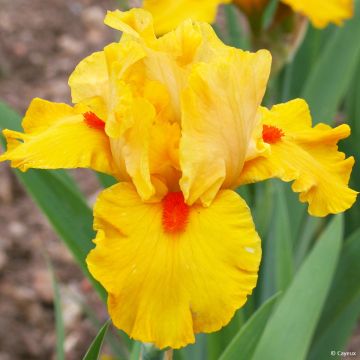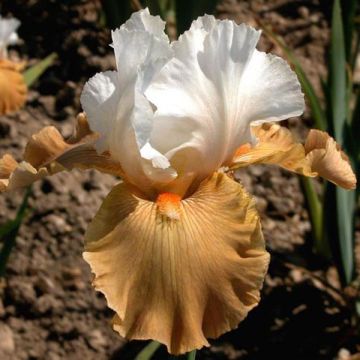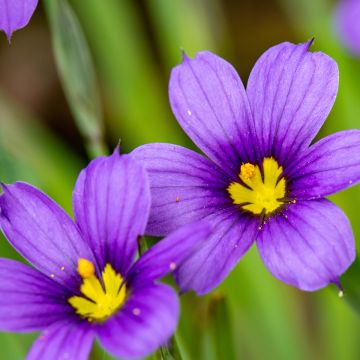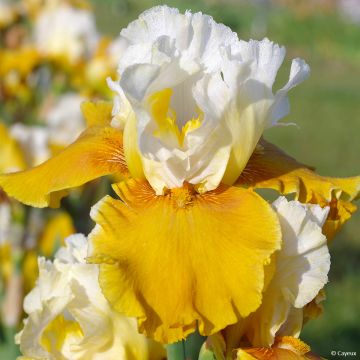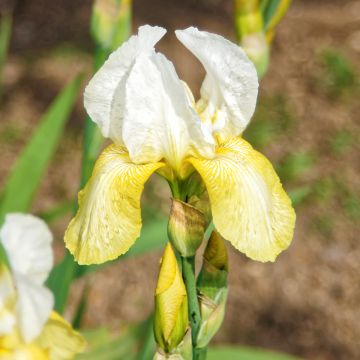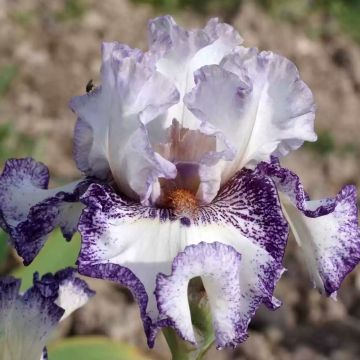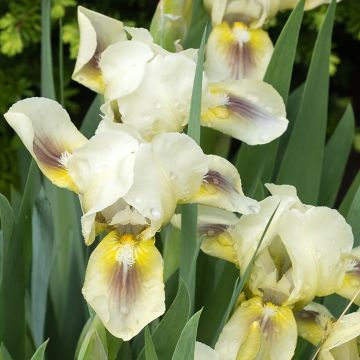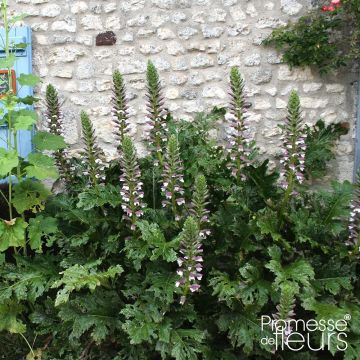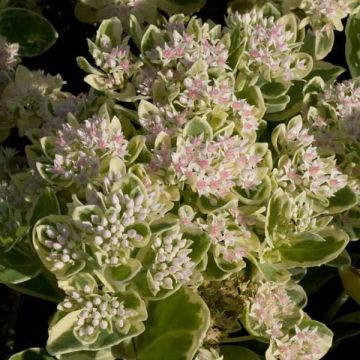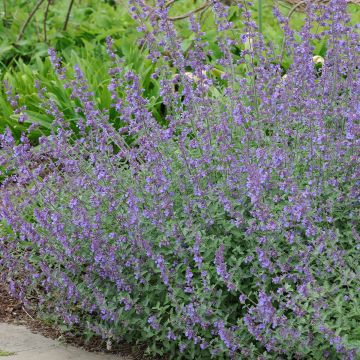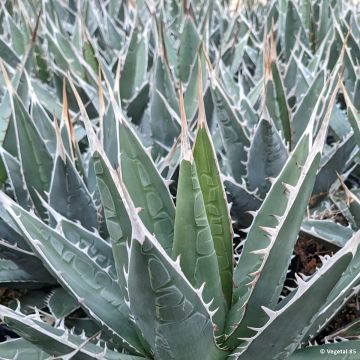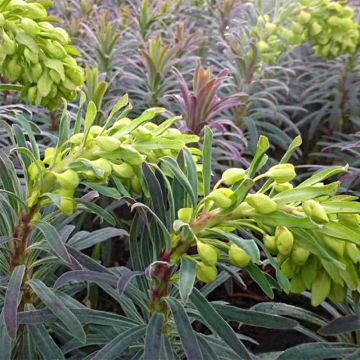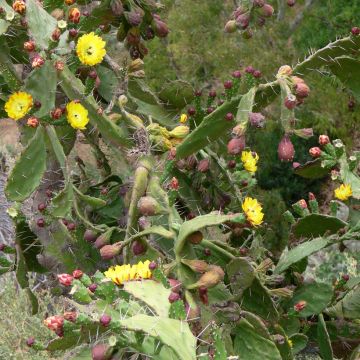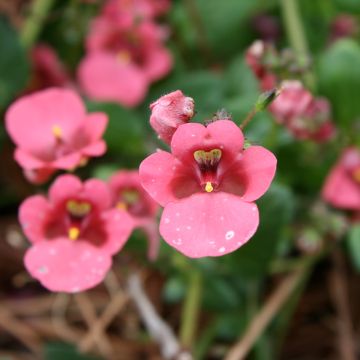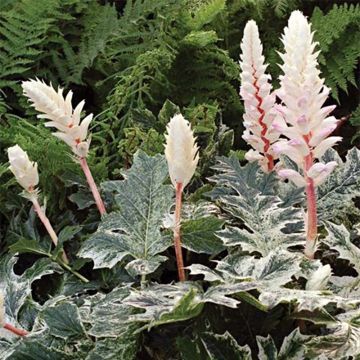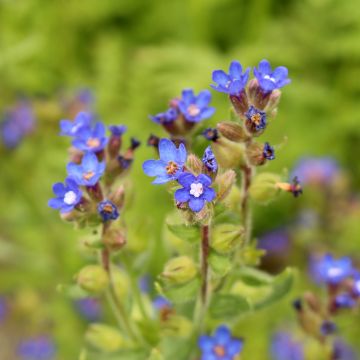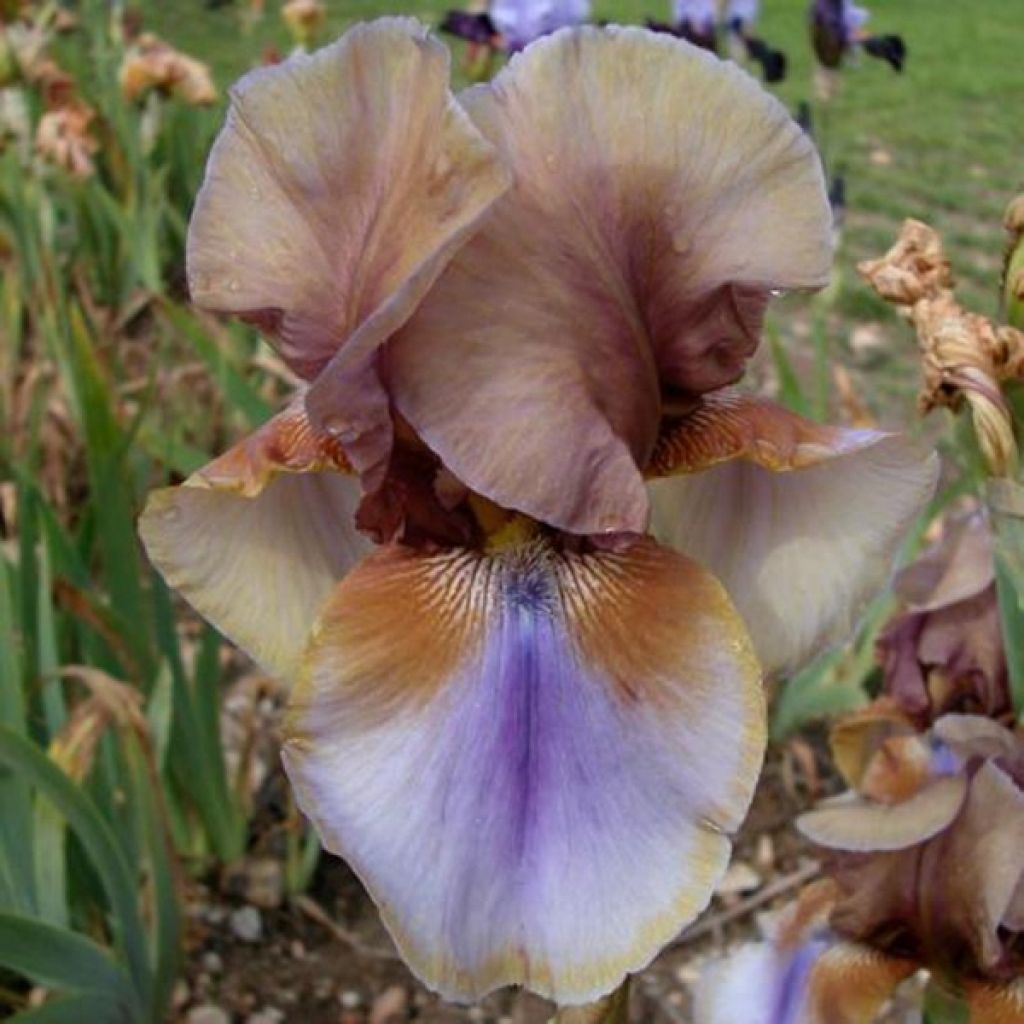

Iris germanica Burnt Toffee - Bearded Iris
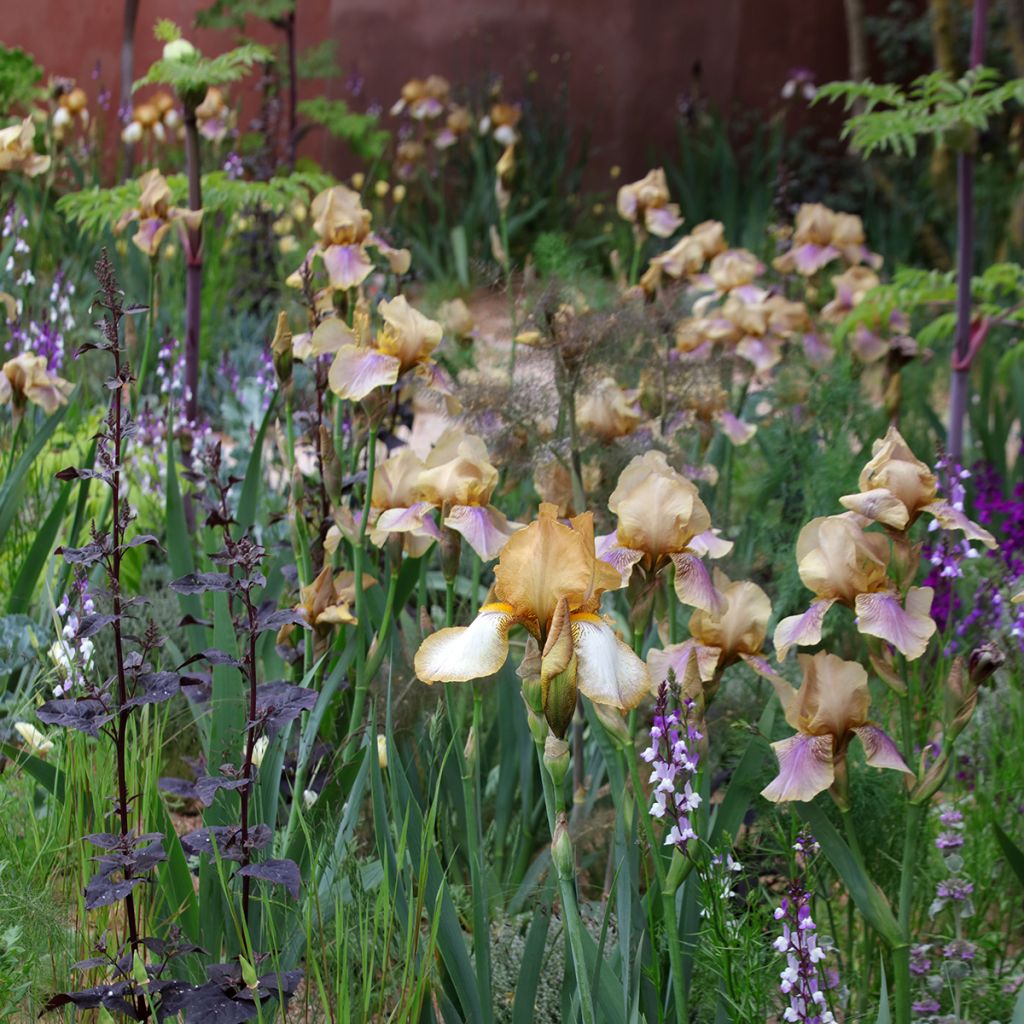

Iris germanica Burnt Toffee - Bearded Iris
Iris germanica Burnt Toffee - Bearded Iris
Iris germanica Burnt Toffee
German Iris, Bearded Iris
This item cannot be shipped to the selected country
Delivery charge from €5.90
Delivery charge from €5.90
More information
Schedule delivery date,
and select date in basket
This plant carries a 12 months recovery warranty
More information
We guarantee the quality of our plants for a full growing cycle, and will replace at our expense any plant that fails to recover under normal climatic and planting conditions.
From €5.90 for pickup delivery and €6.90 for home delivery
Express home delivery from €8.90.
From €5.90 for pickup delivery and €6.90 for home delivery
Express home delivery from €8.90.
Does this plant fit my garden?
Set up your Plantfit profile →
Description
Iris germanica 'Burnt Toffee' is a variety of iris that has been in gardens for a long time, and its unusual colour always draws attention. Difficult to describe precisely, it slightly changes throughout the day. Its large, unfussy flower is an "strange and seductive blend of smoked copper and light violet blue", or made of beige to golden bronze petals and rose chocolate sepals with a lavender blue median, caramel shoulder, and old gold edge, surrounding a blue beard. This iris with smoky tones is truly unique, and its late flowering beautifully concludes the season of tall irises, with a gentle scent of orange blossom. It is a floriferous and prolific variety that has a striking effect in sunny beds and rockeries.
'Burnt Toffee' Iris is a perennial rhizomatous plant that grows from spring in elegantly upright clumps, with its foliage disappearing in winter. It belongs to the Iridaceae family. It is one of the many cultivars obtained over the centuries, and its controversial origin revolves around the number of chromosomes of potential ancestors. It is worth noting that Garden Irises have European origins. They are plants that thrive in calcareous soils and require plenty of sunlight for their rhizomes to "cook" in summer and bloom. A minimum of 6 hours of sunlight per day is generally required.
'Burnt Toffee', of unknown origin, is a true gift from chance and nature. It reaches a height of 90cm (35in) when in bloom, with 7 to 9 flower buds on each branch of its 3-branch ramified stem. The clump spreads indefinitely over time, with the central rhizomes thinning out in favour of the outer rhizomes. The foliage consists of long and wide sword-shaped leaves, slightly glaucous green, with parallel veins. In April, floral stems appear, which will produce large flowers in May-June, opening from the top down to the lower branches. The very rich and distinctive colour of this plant, as is always the case with Garden Irises, is enhanced by the silky texture of the upright petals and the drooping sepals. The colour palette includes shades of mauve, pink-brown, golden bronze, with a touch of muted red. It is worth noting that the flower is fragrant.
Schreiner (U.S.A), 1977, unknown parents.
To accompany irises, choose plants that meet their specific needs (exposure, soil, etc.), have a "respectful" growth habit towards irises (low-growing or light-foliaged plants), and complement them decoratively (appearance, flowering time). For example, Gaura plants provide little shade to irises and keep the iris bed attractive throughout summer. Eschscholzia plants also tolerate dry soil like irises. Perennial geraniums, sage, and Libertia also pair well with irises. Steep slopes and terraced edges can be stabilized by dense plantings of old diploid varieties that require little care. If the goal is more ornamental and easier access for care, modern varieties can be chosen, such as intermediates that are less likely to be literally flattened by wind and rain than tall varieties.
When planting against a wall, the relative shelter from the wind allows for the use of tall irises. Of course, shorter and earlier varieties can be planted in the foreground.
Border of a pathway: the realm of dwarf irises under 40cm (16in), as well as intermediates (in size and earliness) and border irises, which are medium-sized but flower with the tall varieties.
Border of a flowerbed: the domain of irises...border irises but also dwarfs, depending on the circumstances.
Mixed border: the entire range of sizes can be used, chosen according to the space (foreground, background) and the size of the surrounding plants.
Iris bed, iris garden: the paradise of iris enthusiasts, where the choice of varieties (shape, colour, fragrance, etc.) reflects individual taste. The use of bearded irises of all sizes allows for two and a half months of flowers in spring. The choice of reblooming irises offers a few extra flowers in late summer or autumn, depending on the climate.
The vegetable garden can be adorned with a few clumps or borders of irises, as it is also a classic place for growing flowers for cutting.
Report an error about the product description
Iris germanica Burnt Toffee - Bearded Iris in pictures
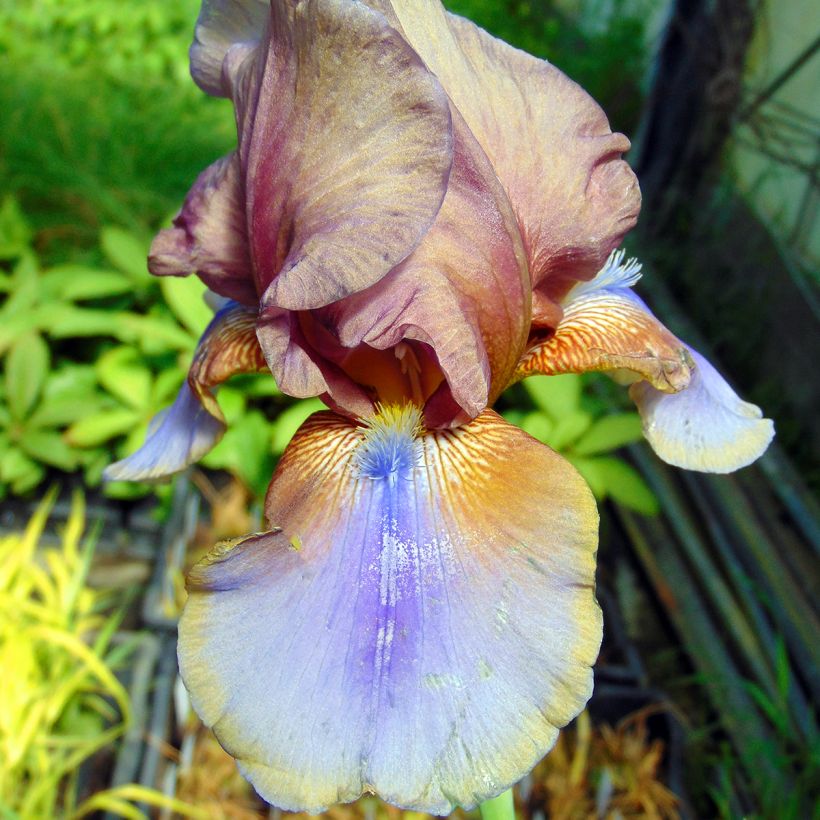

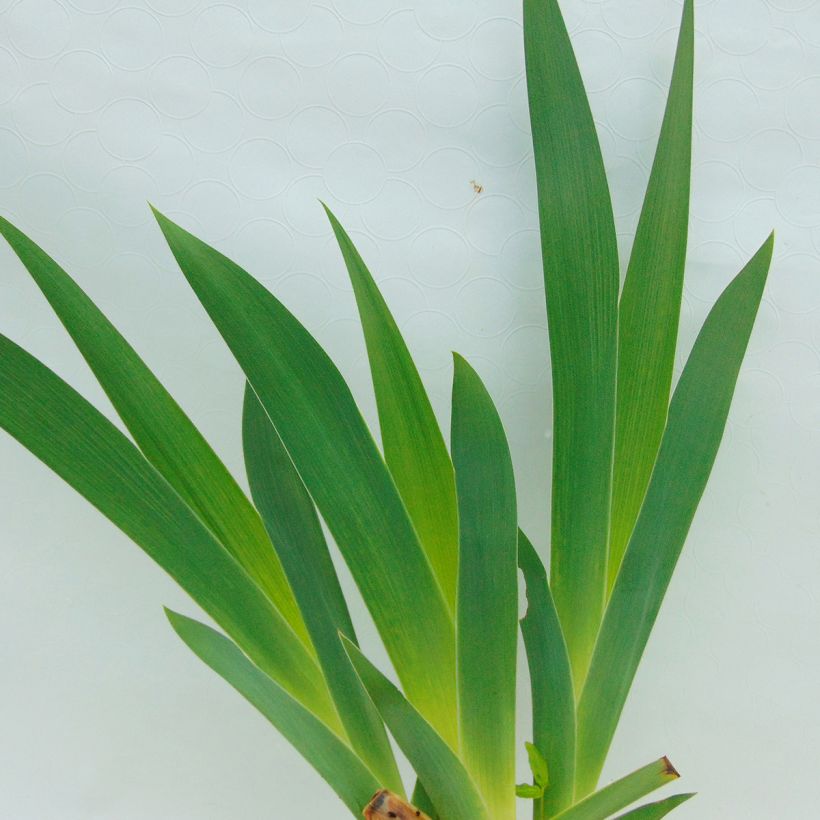



Flowering
Foliage
Plant habit
Botanical data
Iris
germanica
Burnt Toffee
Iridaceae
German Iris, Bearded Iris
Cultivar or hybrid
Other German Iris - Bearded Iris
Planting and care
Do you have a sunny, sheltered, warm and rather dry location in the summer?
This is the ideal location for planting tall bearded irises! In the shade, they grow but do not flower. They can be grown in all regions. Hardy, they do not need winter protection. Well-drained soil is perfect, even if it is rather dry. German irises require lime soil: amend your soil with lime if it tends to be acidic. Soil that is too wet promotes rotting of the rootstock. Plant from July to September. The rootstocks have enough time to grow sufficiently before being dug up, and then to grow new roots before winter. They should be planted as soon as they are purchased for the best result. Plan to divide the irises every 4 years or so to give them fresh soil. They have vigorous growth and require space to develop and flower well. They are planted with spacing appropriate to the size and vigour of the variety: about 34-50cm (13-20in) for tall varieties (5 to 10 plants per square metre). In a monochrome planting, the rootstocks are planted in a zigzag pattern. To create a mix of colours, it is advisable for the overall aesthetic of the iris bed to plant them in groups of several plants of the same variety. Always consider the direction of growth of the rootstocks by arranging them in a star shape, with buds and leaves facing outward, and space them well from other varieties so they have room to develop.
Planting
Dig a hole that is wide and deep enough. Make a large conical mound of soil in the hole, on which the rootstock and spread-out roots are placed. Cover the roots. It is important that the rootstock is left just above the surface of the soil. It should not be planted in a depression (risk of rot), so plan for the soil to settle and the iris to sink. In clay or wet soil, the rootstock should even be left elevated on a slight mound of a few centimetres. To make the soil adhere to the roots, lightly compact the soil and water it abundantly immediately after planting. Water if necessary 2-3 times until the plant takes root.
Maintenance:
Keep the soil free of weeds by shallow hoeing, taking care not to damage the rootstocks or roots. Weeds shade the irises, retain moisture (causing rot), and attract slugs. Similarly, remove dry leaves. If they are diseased (reddish-brown spots of heterosporiosis), burn them. Remove faded flowers.
Planting period
Intended location
Care
-
, onOrder confirmed
Reply from on Promesse de fleurs
Mediterranean perennials
Haven't found what you were looking for?
Hardiness is the lowest winter temperature a plant can endure without suffering serious damage or even dying. However, hardiness is affected by location (a sheltered area, such as a patio), protection (winter cover) and soil type (hardiness is improved by well-drained soil).

Photo Sharing Terms & Conditions
In order to encourage gardeners to interact and share their experiences, Promesse de fleurs offers various media enabling content to be uploaded onto its Site - in particular via the ‘Photo sharing’ module.
The User agrees to refrain from:
- Posting any content that is illegal, prejudicial, insulting, racist, inciteful to hatred, revisionist, contrary to public decency, that infringes on privacy or on the privacy rights of third parties, in particular the publicity rights of persons and goods, intellectual property rights, or the right to privacy.
- Submitting content on behalf of a third party;
- Impersonate the identity of a third party and/or publish any personal information about a third party;
In general, the User undertakes to refrain from any unethical behaviour.
All Content (in particular text, comments, files, images, photos, videos, creative works, etc.), which may be subject to property or intellectual property rights, image or other private rights, shall remain the property of the User, subject to the limited rights granted by the terms of the licence granted by Promesse de fleurs as stated below. Users are at liberty to publish or not to publish such Content on the Site, notably via the ‘Photo Sharing’ facility, and accept that this Content shall be made public and freely accessible, notably on the Internet.
Users further acknowledge, undertake to have ,and guarantee that they hold all necessary rights and permissions to publish such material on the Site, in particular with regard to the legislation in force pertaining to any privacy, property, intellectual property, image, or contractual rights, or rights of any other nature. By publishing such Content on the Site, Users acknowledge accepting full liability as publishers of the Content within the meaning of the law, and grant Promesse de fleurs, free of charge, an inclusive, worldwide licence for the said Content for the entire duration of its publication, including all reproduction, representation, up/downloading, displaying, performing, transmission, and storage rights.
Users also grant permission for their name to be linked to the Content and accept that this link may not always be made available.
By engaging in posting material, Users consent to their Content becoming automatically accessible on the Internet, in particular on other sites and/or blogs and/or web pages of the Promesse de fleurs site, including in particular social pages and the Promesse de fleurs catalogue.
Users may secure the removal of entrusted content free of charge by issuing a simple request via our contact form.
The flowering period indicated on our website applies to countries and regions located in USDA zone 8 (France, the United Kingdom, Ireland, the Netherlands, etc.)
It will vary according to where you live:
- In zones 9 to 10 (Italy, Spain, Greece, etc.), flowering will occur about 2 to 4 weeks earlier.
- In zones 6 to 7 (Germany, Poland, Slovenia, and lower mountainous regions), flowering will be delayed by 2 to 3 weeks.
- In zone 5 (Central Europe, Scandinavia), blooming will be delayed by 3 to 5 weeks.
In temperate climates, pruning of spring-flowering shrubs (forsythia, spireas, etc.) should be done just after flowering.
Pruning of summer-flowering shrubs (Indian Lilac, Perovskia, etc.) can be done in winter or spring.
In cold regions as well as with frost-sensitive plants, avoid pruning too early when severe frosts may still occur.
The planting period indicated on our website applies to countries and regions located in USDA zone 8 (France, United Kingdom, Ireland, Netherlands).
It will vary according to where you live:
- In Mediterranean zones (Marseille, Madrid, Milan, etc.), autumn and winter are the best planting periods.
- In continental zones (Strasbourg, Munich, Vienna, etc.), delay planting by 2 to 3 weeks in spring and bring it forward by 2 to 4 weeks in autumn.
- In mountainous regions (the Alps, Pyrenees, Carpathians, etc.), it is best to plant in late spring (May-June) or late summer (August-September).
The harvesting period indicated on our website applies to countries and regions in USDA zone 8 (France, England, Ireland, the Netherlands).
In colder areas (Scandinavia, Poland, Austria...) fruit and vegetable harvests are likely to be delayed by 3-4 weeks.
In warmer areas (Italy, Spain, Greece, etc.), harvesting will probably take place earlier, depending on weather conditions.
The sowing periods indicated on our website apply to countries and regions within USDA Zone 8 (France, UK, Ireland, Netherlands).
In colder areas (Scandinavia, Poland, Austria...), delay any outdoor sowing by 3-4 weeks, or sow under glass.
In warmer climes (Italy, Spain, Greece, etc.), bring outdoor sowing forward by a few weeks.


































